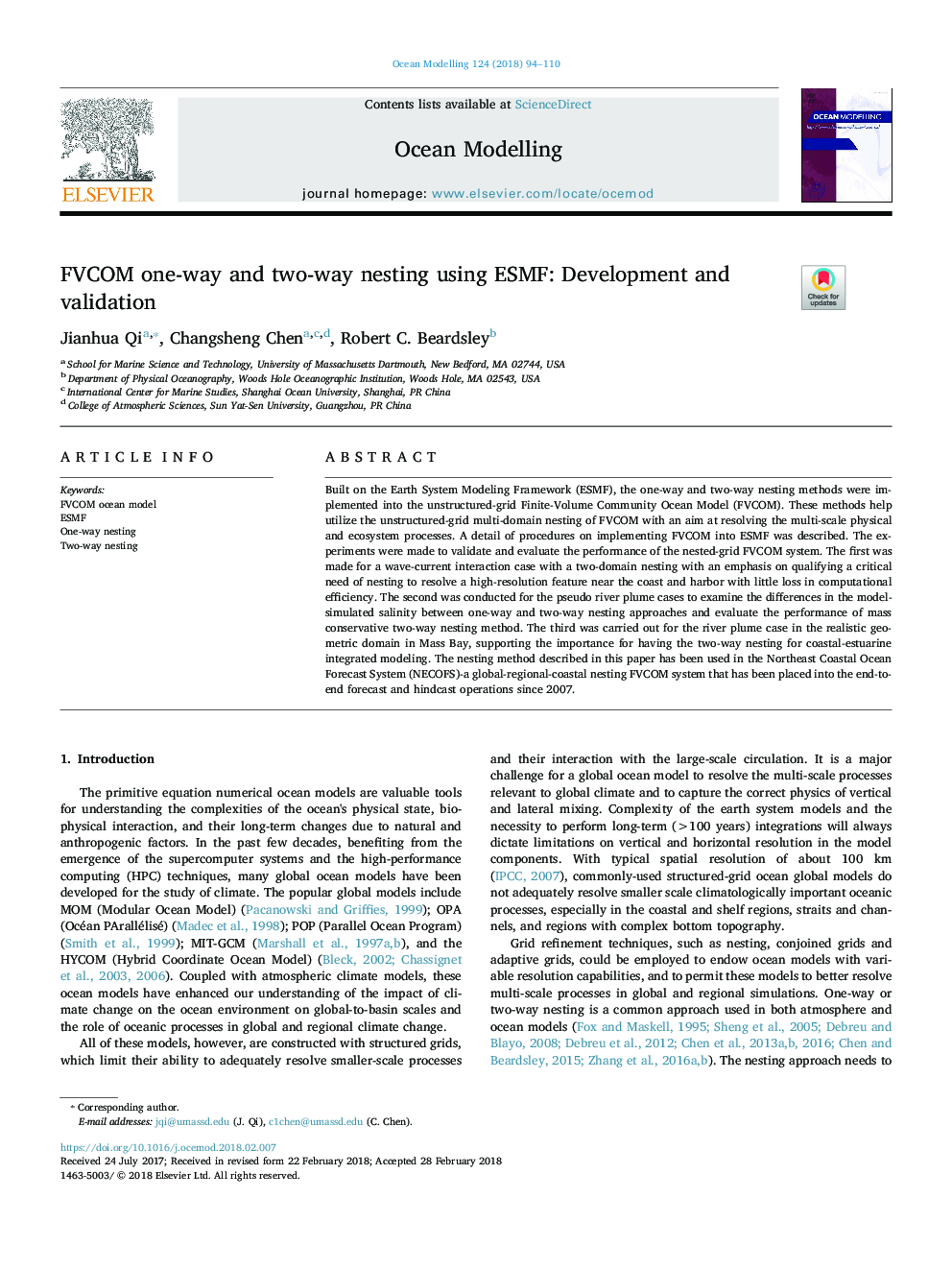| Article ID | Journal | Published Year | Pages | File Type |
|---|---|---|---|---|
| 8886523 | Ocean Modelling | 2018 | 17 Pages |
Abstract
Built on the Earth System Modeling Framework (ESMF), the one-way and two-way nesting methods were implemented into the unstructured-grid Finite-Volume Community Ocean Model (FVCOM). These methods help utilize the unstructured-grid multi-domain nesting of FVCOM with an aim at resolving the multi-scale physical and ecosystem processes. A detail of procedures on implementing FVCOM into ESMF was described. The experiments were made to validate and evaluate the performance of the nested-grid FVCOM system. The first was made for a wave-current interaction case with a two-domain nesting with an emphasis on qualifying a critical need of nesting to resolve a high-resolution feature near the coast and harbor with little loss in computational efficiency. The second was conducted for the pseudo river plume cases to examine the differences in the model-simulated salinity between one-way and two-way nesting approaches and evaluate the performance of mass conservative two-way nesting method. The third was carried out for the river plume case in the realistic geometric domain in Mass Bay, supporting the importance for having the two-way nesting for coastal-estuarine integrated modeling. The nesting method described in this paper has been used in the Northeast Coastal Ocean Forecast System (NECOFS)-a global-regional-coastal nesting FVCOM system that has been placed into the end-to-end forecast and hindcast operations since 2007.
Keywords
Related Topics
Physical Sciences and Engineering
Earth and Planetary Sciences
Atmospheric Science
Authors
Jianhua Qi, Changsheng Chen, Robert C. Beardsley,
